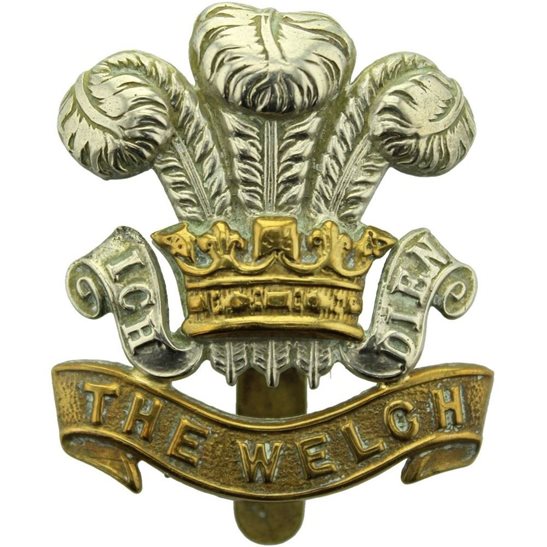Personal Details
Born: 17 July 1893 in Prees, Shropshire and baptised 7 August the same year in Prees Parish Church.
Family: He was the eldest of five children born to Thomas James Hares, a farmer, and his wife Lucretia. He married Sarah Gladys Parker in 1920 in Wrexham, Denbighshire, Wales and together they had three children – Colin T P, Kathleen A and Thomas W.
Residence: In 1901 and 1911 he was living with his family at Millenheath Farm, Prees, Shropshire. His medal records show him living at Old Fens Hall, Whitchurch, Shropshire in 1927 and Kelly’s 1934 Directory shows him farming at Twemlows Hall, Higher Heath, Whitchurch. In 1939 he was living at 12 Grosvenor Road, Tarvin, Cheshire.
Employment: In 1911 he was employed on a farm; by 1934 he was a farmer. In 1939 he was a milk sampler for Cheshire Council.
Died: In 1976 in Cheshire.
Military Details
Regiment: Welsh Regiment
Rank: 2nd Lieutenant
Service Number:
Date of Enlistment: Not known
Date of Discharge: Not known
Reason for Discharge: Demobilisation
Other Information: Twice mentioned in dispatches. Brother to Joseph Robert Hares who served in WW1 and Vincent Colin Hares who was killed in action in WW1 and is commemorated on the Prees and Lower Heath School memorials.
Thomas was awarded the Campaign Medals (British War Medal and Victory Medal)

The British War Medal (also known as 'Squeak') was a silver or bronze medal awarded to officers and men of the British and Imperial Forces who either entered a theatre of war or entered service overseas between 5th August 1914 and 11th November 1918 inclusive. This was later extended to services in Russia, Siberia and some other areas in 1919 and 1920. Approximately 6.5 million British War Medals were issued. Approximately 6.4 million of these were the silver versions of this medal. Around 110,000 of a bronze version were issued mainly to Chinese, Maltese and Indian Labour Corps. The front (obv or obverse) of the medal depicts the head of George V. The recipient's service number, rank, name and unit was impressed on the rim.
The Allied Victory Medal (also known as 'Wilfred') was issued by each of the allies. It was decided that each of the allies should each issue their own bronze victory medal with a similar design, similar equivalent wording and identical ribbon. The British medal was designed by W. McMillan. The front depicts a winged classical figure representing victory. Approximately 5.7 million victory medals were issued. Interestingly, eligibility for this medal was more restrictive and not everyone who received the British War Medal ('Squeak') also received the Victory Medal ('Wilfred'). However, in general, all recipients of 'Wilfred' also received 'Squeak' and all recipients of The 1914 Star or The 1914/1915 Star (also known as 'Pip') also received both 'Squeak' and 'Wilfred'. The recipient's service number, rank, name and unit was impressed on the rim.

